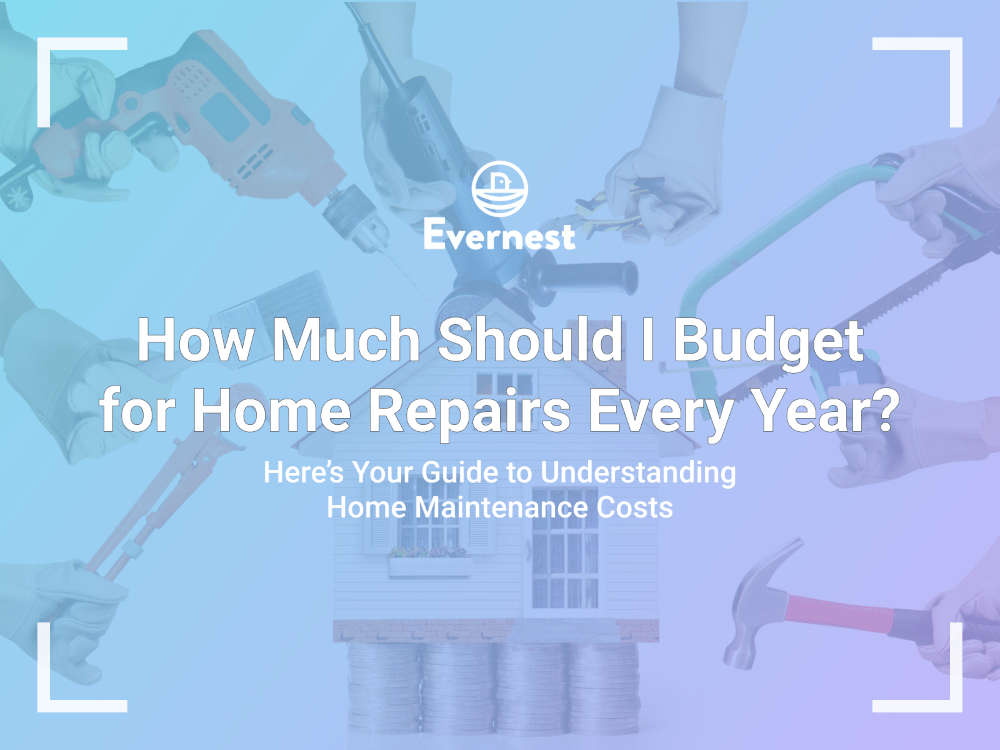Determining home maintenance costs can be challenging, but it’s an important aspect of budgeting all landlords should consider.In this article, we’ll take a closer look at some ideas behind how much you should budget for home repairs every year as well as explore the reasoning behind them.
How to Use the Home Maintenance Budgeting Rule of Thumb
Home maintenance costs, including repairs and maintenance, tend to be overlooked expenses with investors and landlords alike. Despite being often forgotten about, it doesn’t matter what shape you begin renting your property in, inevitably there will be maintenance concerns that you will have to handle.We’ve met with investors who pull out their spreadsheets boasting 15% CAP rate projections with absolutely no, or minimal, allowance for maintenance and repair. We politely explain that these projections are simply not realistic. We hope that they listen and begin to think through the ramifications of basing investment returns on wishful thinking and not on years of experience.After buying, selling, and renting thousands of houses since 2003, we understand a thing or two about maintenance and repair. Based on our experience, we believe most homeowners underestimate maintenance and repairs. Here's how you can avoid doing that.
The 1% Rule
According to the 1% rule, when budgeting for rental home maintenance cost, you should put aside 1% of the home value annually. For example, you can expect around $4,000 a year in repairs and maintenance if your rental house is worth $400,000.But you might find that in different markets, the general rule simply does not apply. For example, if you are in an area where you will be buying older homes that require more maintenance, you can anticipate much higher expenses for maintenance and repairs than in a newer home in a growing part of the city.
The Square Footage Rule
Another common budgeting rule to use for home maintenance cost is the square footage rule. In theory, you can put away $1 per square foot of your home in anticipation of annual maintenance costs.Don’t forget, though, that much like the 1% rule, the square footage rule may not necessarily apply to all regions of the country.
Grain of Salt
Regardless of which rule you decide to use, whether it be the 1% rule, the square footage rule, or any other rule you find on your own, it should always be taken with a grain of salt. The idea is to consider these figures when budgeting for our home maintenance cost.Rather than abiding by the rules explicitly, consider conducting repairs on a semi-routine basis. Generally speaking, you can anticipate repairs on the following significant projects as follows:
- Replacing water heaters
- Tankless water heaters: every 20 to 25 years
- Traditional water heaters: every 8 to 12 years
- Repainting home exteriors
- Brick: every 15 to 20 years
- Stucco: every 5 to 6 years
- Aluminum siding: every 5 years
- Wood siding: every 3 to 7 years
- Fiber cement siding: every 10 to 15 years
- Replacing roofing
- Metal: every 50 to 75 years
- Rubber: every 30 to 50 years
- Wood shingles: every 20 to 25 years
- Asphalt shingles: every 15 to 30 years
- Composition shingles: every 12 to 20 years
Adjusting Your Calculations
Using the rules as a general rule of thumb is an excellent start to your budget. You can constantly adjust your calculations based on a few determining factors.
Determining Factors
The costs of maintenance and repairs can vary based on several determining factors, including:
- Age of the property
- Condition of the property
- Labor costs
Budgeting Around 1% of the Value of Your Home
If you’re looking at following the 1% rule, you’ll want to ensure your home fits these determining factors, including:
- Built with modern and durable materials
- Metal roofing
- Fiber cement siding
- Located in a mild, dry, or temperate climate
- Less than 10 years old
Budgeting Around 2% of the Value of Your Home
If you’re looking at following the 1% rule, you might want to consider budgeting for closer to 2% of the value of your property based on these determining factors, including:
- Built with moderately durable materials
- Rubber roofing
- Stucco siding
- Located in a moderate climate
- 10 to 20 years old
Budgeting Around 3% of the Value of Your Home
If you’re looking at following the 1% rule, you might want to consider budgeting for closer to 3% of the value of your property based on these determining factors, including:
- Built with lower-life materials
- Composition shingle roofing
- Wood siding
- Located in a stormy, wet, or humid climate
- More than 30 years old
How Do You Plan for Home Maintenance?
When it comes to planning for home maintenance, it can be challenging. You’ll want to consider the overall condition of your home, for starters. Perform walk-throughs as often as you are able and keep an eye out for smaller concerns that could lead to larger problems later on. Some things to look out for might include small cracks or leaks.
Set Up a Home Maintenance Fund
Since so many landlords overlook maintenance costs, it’s a good idea to build up a home maintenance fund to help you out in the longer run. Some landlords even go to put a set amount away monthly into a separate bank account. These funds can be accessed in case of emergency repairs.
Home Maintenance Costs Take Saving Ahead of Time
Regardless of which method you choose to follow, having a solid understanding of home maintenance cost is a crucial part of being a landlord. It’s important to know what options you have out there and weigh them based on a few determining factors for your property to find a formula that best fits your situation. When all else fails, consider contributing a monthly sum to a home maintenance fund.


